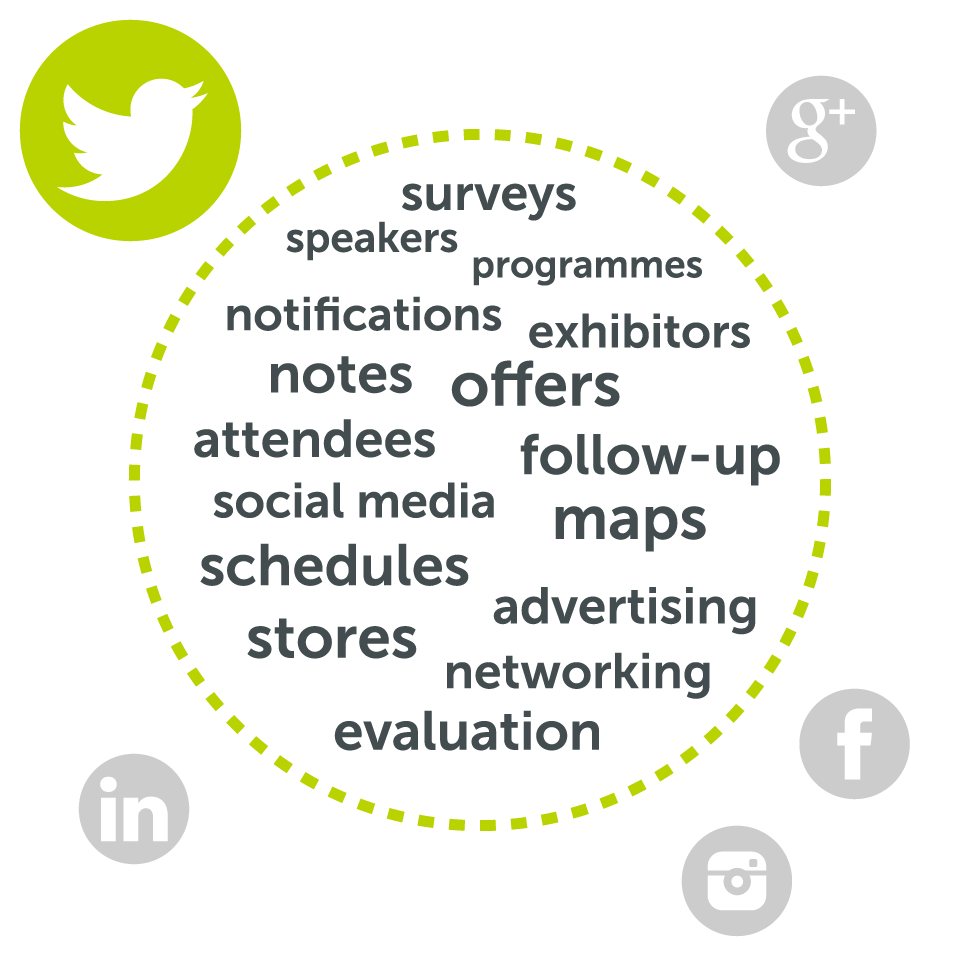Social Media has revolutionised event marketing and as such has found a solid place in most event communication plans. Used as a key promotional tool it is driving awareness ahead of the event and helping improve attendee numbers, but is it helping improve the event experience and boost engagement during the event?
Many event professionals are still failing to capitalise on the huge benefit social media interaction can have ‘during’ the event. Whether it is a one day exhibition or a three day convention it’s more than establishing a hash tag. The challenge is integrating social into the overall event design, being responsive and broadening participation beyond the confines of the event space.
It can be problematic as the person who manages social media is not always included in discussions around event production, especially the technical side of things like vision, multimedia and webcasting. But social interaction is key to the success and longevity of event as engagement improves loyalty.
So how can you make sure you integrate social media into your event design to engage attendees and broaden participation?
 Let’s talk tech – Engaging Attendees
Let’s talk tech – Engaging Attendees
Do a walk-through in your mind and make a list of what the attendee will see, hear, touch or feel from start to finish at the event. At each audience touch-point from the entrance, to the table setting, to the stage, think about how you can engage the audience in social media participation.
Twitter is a powerful way to encourage real time interaction and instantly gives you more visibility. Make sure you discuss with your technical team how you can include Twitter into the different areas of your event. Display your key social profiles on strategically placed plasmas and projected onto screens/ walls and prefacing any presentations. If you have speakers encourage them to engage the audience, asking them to tweet questions using the event hash tag.
You could use a Twitter scroll on the bottom of your event presentations and/ or on all your holding screens. As another option consider a Twitter Walls, they are a unique visualisation of live updates and will instantly capture attention.
With any of these tools you need to understand the technicalities and discuss any concerns with your production team. You want to get the most out of your investment so ensuring these additions are branded and integrated into the same look and feel as the rest of the event is essential.
Moderation is so important when talking about live feeds. They can be populated two ways, automatically or operator controlled. With the latter you have more control as to what is seen but whichever you choose it is important your technical team are fully briefed. Equip them with knowledge of your social profile details, hash tags and key messages and so they can moderate the feeds for you and remove anything that may be off topic or potentially offensive.
Beyond the venue – Broaden your participation
If you are successfully engaging with attendees at your event, it is the perfect opportunity to broaden participation by being responsive. Assign a dedicated team to manage your social media channels as this is the time you are likely to see more activity than usual. Having a dedicated team at the event means you can not only respond to attendees at the conference but also broadcast sound bites to engage those that may not be there in person. Pay special attention to providing insight into what is happening at the event and highlight why it is beneficial to attend in person.
You can go one step further and invite those who could not attend the event to join in via webcast. Webcasting has come a long way from the days of dial up and has evolved as technology infrastructures have improved as well as production capabilities. Webcasting is now a fully interactive social tool as your recording can be live streamed through YouTube or your Google+ Hangout. Twitter feeds can be integrated into the design to allow the speaker to engage in direct questions and gain valuable feedback in real time. Discussing the logistical challenges with your production team will allow you to understand how best to utilise this technology.
In conclusion,
Social Media offers much more than a promotional platform for your event. Utilised to its full capacity, you can take your event to the next level and broadcast to multiple locations extending your reach and allowing the experience to live on long after the event has finished. The real challenge is integrating it seamlessly into your overall event design. To do this you need to discuss your key social media objectives ahead of the event with your production team. They will be able to suggest the technical solutions available and how best to utilise the technology to ensure social success at your event.




Comments